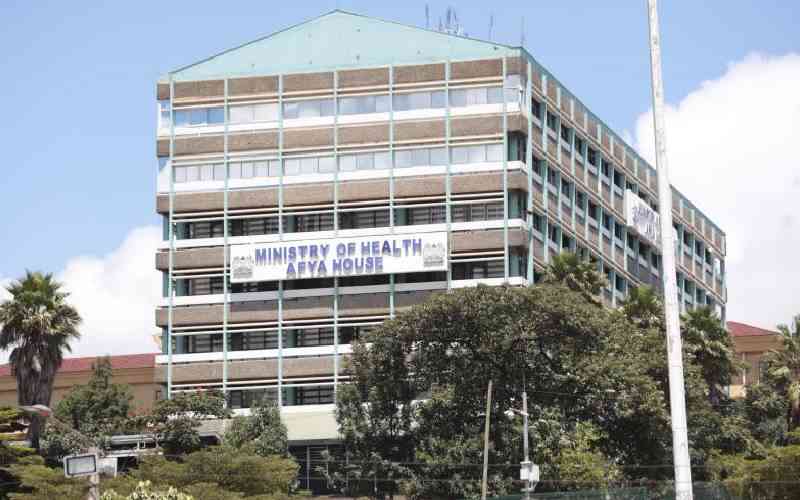
Construction work at what would be East Africa’s first coal-fired power plant is already one year behind schedule.
But even before it breaks ground, the project is already generating controversy and firing up Kenya’s quiet resort county of Lamu.
Labelled by the Government as a Vision 2030 project, Lamu’s coal power plant is expected to produce 1,050 megawatts (MW) of electricity upon completion – a 50 per cent addition to the 2,200MW on the national electricity grid.
However, Lamu’s local community, leaders and environmental campaigners have united in opposition to the project, in what is slowly evolving into a fierce conflict between mega infrastructure and local community interests.
Amu Power, a consortium that includes local firms Gulf Energy and Centum, is spearheading the development of the Sh200 billion power plant, with the Investment and Power Construction Corporation of China charged with construction.
Construction of the power plant on 869 acres in Kwasasi, 20 kilometres off Lamu town, was scheduled to begin last September.
Tender award
The project hit its first snag in mid-2014 when Chinese firm HCIG Energy Investment Co sued the Government and Amu Power to block the tender award.
In documents filed at the High Court and the Treasury’s Public Private Partnerships (PPP) Tribunal, HCIG Energy accused the tender committee at the Ministry of Energy of favouritism and flouting procurement laws.
The firm accused the Government of awarding Amu Power the tender illegally, since consortium member Centum had been disqualified in an earlier round of the same tendering process.
Treasury’s PPP tribunal threw out the petition by HCIG, and in June last year, the firm had a change of heart and withdrew the legal suit from the High Court, paving the way for the project to proceed to the next phase.
Last month, however, a renewed wave of opposition emerged when Lamu community based organisations and some county leaders challenged Amu Power’s Environmental Sustainability Impact Assessment (ESIA) report.
Civil society groups now want development of the power plant halted, citing harmful and irreversible effects to the ecosystem of Lamu County, and the livelihoods of thousands of farmers and fishermen.
“The air and water pollution from the power plant will be irreversible,” said Abubakar Al Amudy, the chairperson of Save Lamu, a civil society organisation.
“The plant and aquatic life will be poisoned, and the noise and air pollution will make it difficult for those living around the plant.”
Stay informed. Subscribe to our newsletter
Amu Power’s ESIA to the National Environment Management Authority (Nema) details some of the anticipated environmental impacts the plant will have on the ecosystem.
“Construction of the coal power plant will entail clearing and excavation of soil over an area of about 80 hectares, while the excavation for each tower structure of the transmission line will cover an area of about 25m2,” reads the report from Amu.
“This will cause changes in the drainage regime and increased erosion potential, leading to run-off impacts. There is a potential of sub-surface soil contamination if fuels used for the construction plant and equipment are not stored safely using secondary containment methods.”
Potential impact
The report states that the potential impact on soils is “considered low negative” if the mitigation measures recommended in the study are complied with.
Mr Abubakar, however, feels that the report does not adequately spell out the measures that will be put in place.
“The ESIA is hundreds of pages long and very technical, and the company has not adequately explained what mitigation measures they will put in place to check the environmental harm anticipated,” he said.
But in a rejoinder, Amu Power said the environmental concerns are being blown out of proportion and are misinformed, as the Lamu coal power plant will use clean coal-burning technology.
“Coal power technology has evolved over the years, and we are now able to avoid some of the adverse environmental effects to make sure the energy produced is clean,” said Sanjay Gandhi, the chief operating officer at Kurrent Technologies, the firm Amu contracted to carry out the ESIA.
Mr Gandhi added that Amu Power is working with external consultants to audit the environmental study to ensure compliance.
“We are working with an auditing firm from Britain that has been brought in by the lender, and are following every step of the project to ensure the highest standards of compliance,” he said.
Still, just two weeks ago, Lamu County’s executive member in charge of environment, Samia Omar, resigned from her post to protest against the coal plant.
“As county executive of both investment and natural resources, my mandate and obligation to the public is conflicted between promoting investment in Lamu and preserving the environment,” she said in a statement posted on her social media pages.
“Having read the Environmental and Social Impact Assessment (ESIA) of the Lamu Coal Power Plant, I am convinced that the project will have irreversible and profound impacts on Lamu. I, therefore, don’t feel I can effectively execute my mandate to both promote the investors’ interests as well as that of preserving our natural resources.”
Invitation to monitor
Located on the Northern coast of Kenya, Lamu is home to Lamu Old Town, which was in 2001 listed by the United Nations Educational, Scientific and Cultural Organisation (Unesco) as a significant centre for education in Islamic and Swahili culture in East Africa.
“The growth and decline of the seaports on the East African coast, and interaction between the Bantu, Arabs, Persians, Indians, and Europeans represents a significant cultural and economic phase in the history of the region, which finds its most outstanding expression in Lamu Old Town, its architecture and town planning” the organisation said.
In light of this, in 2014, Unesco’s World Heritage Committee requested an invitation from the Government to monitor the conservation of Lamu Old Town during construction works for the Lamu Port-South Sudan-Ethiopia Transport (Lapsset) project, which the coal plant is expected to supply with power.
Unesco further asked the Government to stop ongoing work on the transport corridor until the impacts of the project to Lamu’s heritage could be ascertained, though the Government said the project was a major national priority.
“... there can be no doubt that a project of this scale and scope, in an area as remote and protected as Lamu, cannot help but have profound negative impacts on the heritage,” Unesco said in report findings.
“These impacts will come from pressure on Old Town to change, pressures of tourism, pressures of pollution, visual pressures associated with the ships coming in and out of the port, as well as from the large constructions, and pressures on the living Swahili culture.”
The justification
Because of its relative availability and low cost of production, coal power is a large contributor to the global energy pool, supplying 41 per cent of energy demand.
Electricity from coal is produced by grinding the naturally occurring carbon fuel into a fine powder that is then combusted in special boilers lined with water. This is then converted into steam that powers electricity-generating turbines.
Coal power plants and steam engines powered the industrial boom of Europe and the US. More recently, developing economies like China and Russia initially opposed attempts to introduce emission caps, while their respective countries were enjoying a manufacturing boom.
However, concerns over climate change and the need for the world to reduce greenhouse gas emissions responsible for global warming have led to a global policy shift from coal.
Further, global ratings agency Moody’s last year stated that half the coal currently being produced is not economically viable, owing to a global glut since even China has cut demand in compliance with clean energy policies.
In another report, analysts at Goldman Sachs stated that the world is due to reach peak global coal production by 2020.
“The industry does not require new investment given the ability of existing assets to satisfy flat demand, so prices will remain under pressure as the deflationary cycle continues,” said a report from the investment bank dated September 2015.
This means investments in coal production at current costs will likely lead to losses for investors and taxpayers in the long term.
Developed countries are leading the switch from coal, with the UK, which derives 30 per cent of its electricity needs from coal, pledging to decommission existing coal power plants by the year 2025.
The US already reached peak coal production in 2008, and consulting firm McKinsey and Company states that “by 2020, the convergence of low-cost shale-gas supply, environmental regulation, and waning international demand is likely to push demand for US coal to at least 20 per cent below current production.”
At last year’s UN climate change conference in Paris, 200 countries –including Kenya – signed a landmark deal to limit global warming to 1.50C above pre-industrial levels, with a special target at emissions from fossil fuels.
The Lamu coal plant is also plagued by concerns over the country’s capacity to absorb the additional power generated.
According to power sector expert and former Energy Regulatory Commission (ERC) chairman, Hindpal Jabbal, looking at energy demand, there is “no room” for the plant.
“This coal plant at Lamu, if installed ... will attract almost $360 million [Sh36 billion] per annum in idle capacity charges for a long time, which is a huge economic waste for the country,” he added in an analysis in Business Beat.
“All efforts should, therefore, be made to stop this project.”
Mr Jabbal added that the plant will “very likely” increase electricity costs by Sh3-Sh4 per kilowatt-hour, an unnecessary cost as there is insufficient demand over the next 14 years to 2030 to operate the plant economically.
Other sector experts have added that there are cheaper, more environmentally friendly energy options, including wind, solar and geothermal.
Geothermal production
Kenya is ranked the eighth-largest geothermal power producer in the world, with McKinsey saying the country accounts for 40 per cent of Africa’s 15,000MW geothermal resource potential. Yet, the country has only tapped into about 2 per cent of this resource.
Data from State power generator KenGen indicates that power generation from geothermal sources grew by 139 per cent in 2015 to hit 3,104GWh.
Hydroelectric sources reduced their generation output by 16 per cent, with total output at 3,308GWh, while wind power generation grew by 118 per cent to 37GWh.
“We do not understand the rationale of spending more on the environmentally costly coal plant at the expense of cheaper alternatives,” said Abubakar.
The deadline for receiving public comments about the power plant’s environmental impact assessment lapsed last week. Nema is now expected to evaluate submitted comments from all quarters and make a decision.
Deputy President William Ruto, while on a recent tour of Lamu, urged residents to support the Government’s projects instead of opposing them.
However, as he was speaking, two different petitions began trending on social media platform Twitter, under the hashtag #SaveLamu, drawing more than 2,000 signatures against the coal project. Organisers have since vowed to go to court if Nema approves the EIA.
fsunday@standardmedia.co.ke
 The Standard Group Plc is a
multi-media organization with investments in media platforms spanning newspaper
print operations, television, radio broadcasting, digital and online services. The
Standard Group is recognized as a leading multi-media house in Kenya with a key
influence in matters of national and international interest.
The Standard Group Plc is a
multi-media organization with investments in media platforms spanning newspaper
print operations, television, radio broadcasting, digital and online services. The
Standard Group is recognized as a leading multi-media house in Kenya with a key
influence in matters of national and international interest.
 The Standard Group Plc is a
multi-media organization with investments in media platforms spanning newspaper
print operations, television, radio broadcasting, digital and online services. The
Standard Group is recognized as a leading multi-media house in Kenya with a key
influence in matters of national and international interest.
The Standard Group Plc is a
multi-media organization with investments in media platforms spanning newspaper
print operations, television, radio broadcasting, digital and online services. The
Standard Group is recognized as a leading multi-media house in Kenya with a key
influence in matters of national and international interest.






